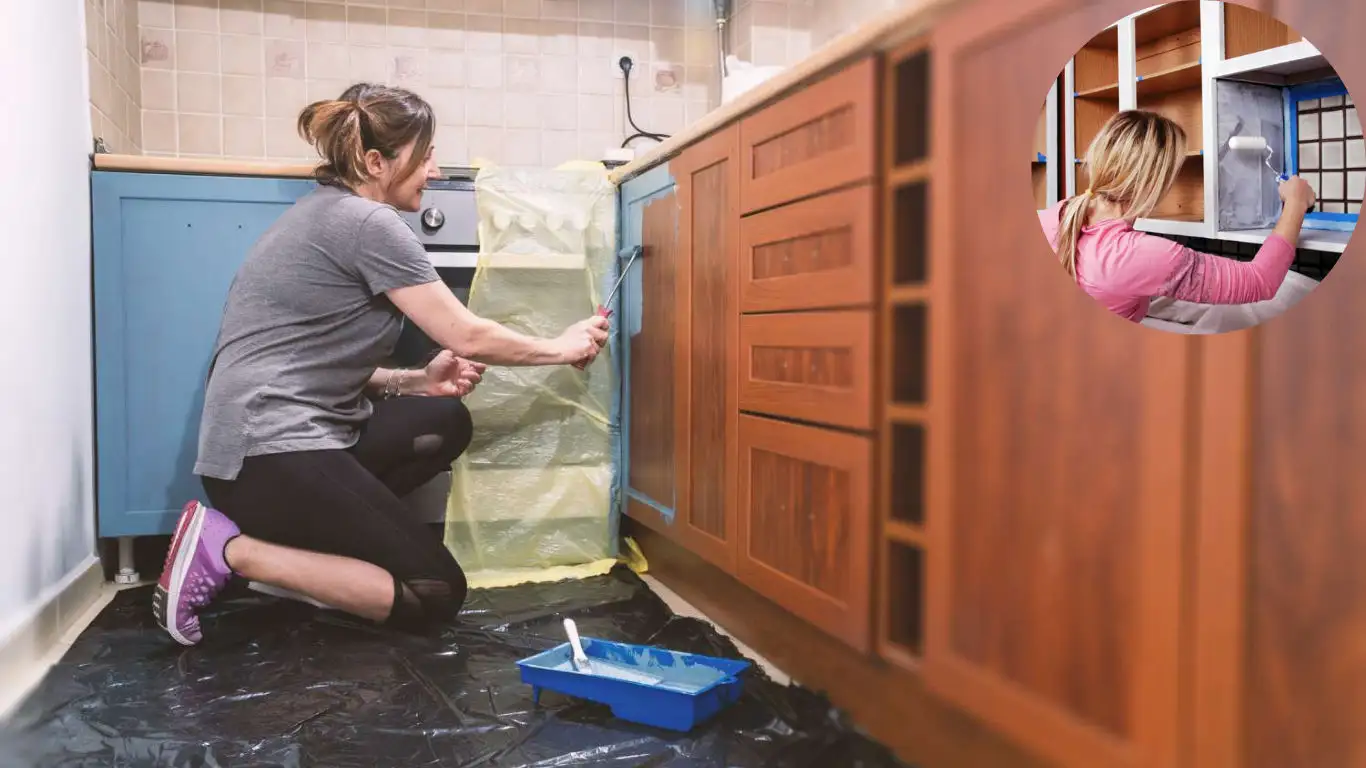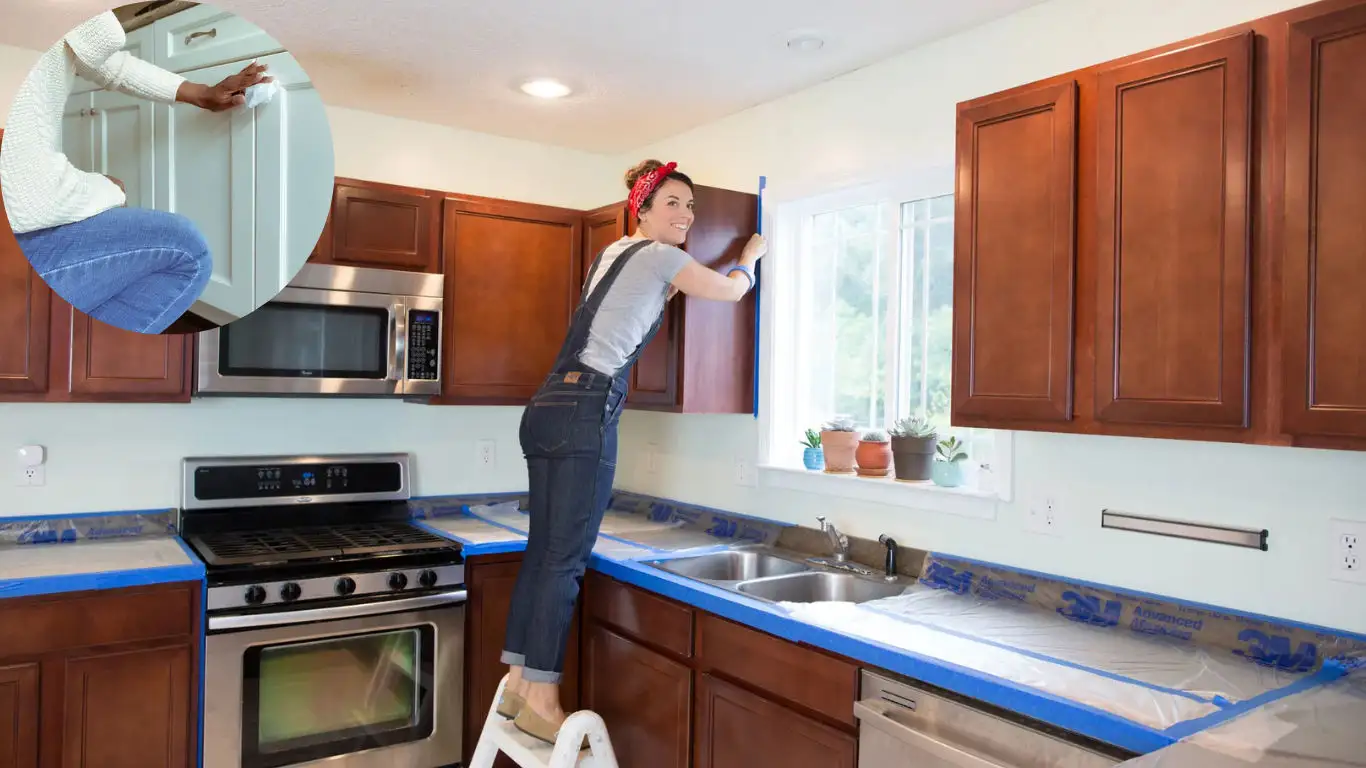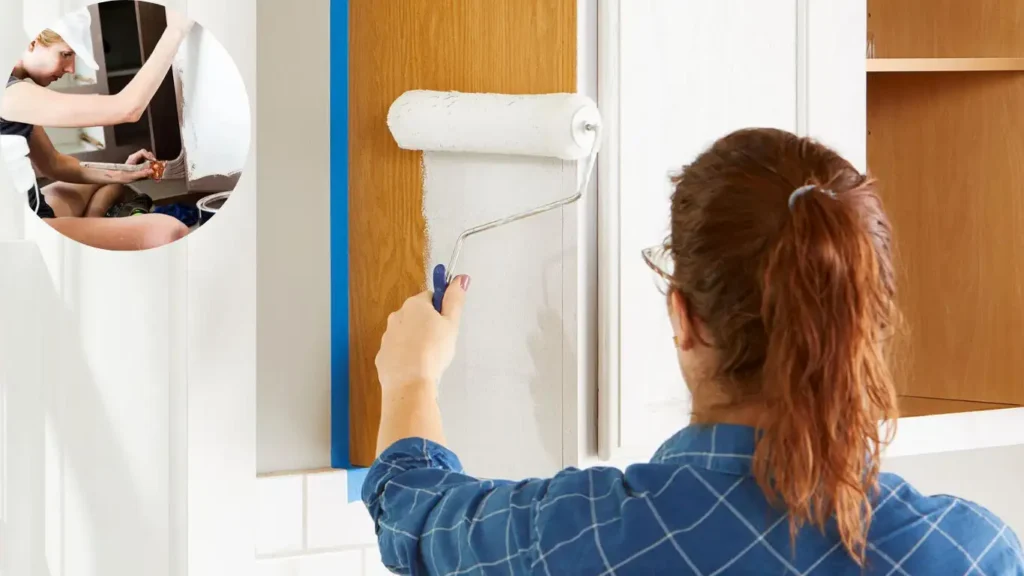Painting the inside of cabinet doors in a home is a design choice that can enhance the overall look and feel of a kitchen. While often overlooked, painting the interior surfaces of cabinet doors can create a more polished and cohesive aesthetic, offering more design freedom and potentially boosting the home’s value. However, it requires additional preparation and expense, so weighing the benefits against the budget and desired style is essential before making a decision.
Reasons for Painting the Inside of Cabinet Doors

Painting the inside of cabinet doors can transform your space in unexpected ways. It’s not just about aesthetics; it adds depth and character to your kitchen or bathroom.
One reason to consider this project is its potential for personalisation. Choosing a bold colour for the insides can make opening those doors a delightful surprise. It showcases creativity, allowing you to express your style even in hidden spaces.
Another benefit is cleanliness. A fresh coat of paint creates a barrier against dust and grime, making it easier to maintain hygiene within cabinets.
Painting these areas helps unify mismatched cabinetry throughout the house while providing an inexpensive update that feels comprehensive without major renovations.
Necessary Materials and Tools for Painting Cabinet Doors
To paint cabinet doors effectively, you’ll need a few essential materials. Start with high-quality paint designed for cabinetry. A satin or semi-gloss finish works best for durability and ease of cleaning.
Next, gather your tools. A good brush is crucial; consider a synthetic bristle brush for smooth application. Foam rollers can also help cover larger areas quickly.
Don’t forget sandpaper to prep the surface before painting. Fine-grit paper will create a smooth base that helps the paint adhere better.
For added convenience, have painter’s tape on hand to protect edges and adjoining surfaces from accidental splatters.
Invest in drop cloths or plastic sheeting to keep your workspace clean during the project. Having these materials ready will make your painting experience more efficient and enjoyable.
You may also read (how to determine the cost of a bedroom house).
Step-by-Step Guide to Painting Inside Cabinet Doors

Remove the cabinet doors from their hinges first. This allows for easier access and prevents any accidental drips on surrounding surfaces.
Next, clean the inside of each home door thoroughly. Use a mild detergent solution to remove grease and dirt. Rinse with water and let them dry completely.
Now it’s time to sand the surface lightly. A fine-grit sandpaper will help create a smooth base for your paint, ensuring better adhesion.
After sanding, apply a primer if necessary. Choose one that works well for your chosen paint type, especially if you’re using darker colours or painting over stained wood.
When it’s dry, pick up your brush or roller and begin applying paint evenly across the interior surfaces. Work in thin layers to avoid drips or streaks.
Let each coat dry thoroughly before deciding whether another layer is needed for full coverage.
Tips and Tricks for a Professional-Looking Finish
Achieving a professional-looking finish on your cabinet doors requires attention to detail. Start by ensuring the surface is clean and free of dust. A thorough wipe-down with a damp cloth will do wonders.
Use painter’s tape to create sharp lines where the cabinet meets other surfaces. This prevents paint from smudging onto adjacent areas, making your edges crisp and polished.
Consider using a high-quality brush or foam roller for an even application. These tools help minimise streaks and ensure smooth coverage.
Don’t rush the drying process; allow each coat to dry completely before applying another layer. Patience pays off in achieving that flawless look.
If you’re feeling adventurous, experiment with different finishes like satin or eggshell for an added touch of elegance.
Alternative Options for Updating Cabinet Doors
Updating cabinet doors doesn’t always mean reaching for a paintbrush. Consider using adhesive contact paper or vinyl wraps for a fresh look without the mess. These materials come in various designs, from wood grain to bold colours.
Another option is to replace the cabinet doors entirely with new ones that match your style preferences. This can be especially effective if you want to switch up the layout or size of your cabinets.
If you’re feeling crafty, stencilling or decoupage can add unique patterns and textures directly onto existing surfaces. This creative approach enables customisation tailored to your home’s unique aesthetic.
For those looking to make a bolder statement, glass inserts in cabinet doors could transform an ordinary kitchen into something extraordinary, showcasing dishware while keeping things tidy. Each method offers a fresh perspective on updating cabinetry without sticking strictly to traditional paints and finishes.
You may also read (what are the different types of house handrails available).
